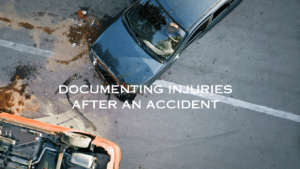
More often than not, the first question asked by new personal injury clients is, “What is my case worth?” When the conversation turns to “I have a friend who was offered $100,000 for their whiplash case,” we know that it’s time to provide some education to our client. For many reasons, the vast majority of the public has no idea how personal injury cases are valued, negotiated and settled, which can be quite detrimental when a person is injured due to the negligence of another.
How Personal Injury Settlements Have Changed
Over the last two decades, the “game” has changed and the insurance companies are keeping record profits. They are using certain tools to increase the odds that the profits continue. It is important for an accident victim to understand how technology has changed the field in favor of the insurance companies.
What We Can Do About It
First, every injury matters. By that, we mean that a strain and a sprain are treated differently. A fracture versus a break are night and day. And, if you are in pain, but never do anything about it, you really don’t have a claim. As the saying goes, the devil is in the details.
Unfortunately, the details are literally wrapped up in computer claims processing software programs, which nearly 80% of insurance companies use to settle claims. While the majority use a program called Colossus, there are several other well known programs that are used to reduce “risk” by lowering payouts. The software programs value cases by looking at various rules or factors and assumes that the insurance adjuster is plugging in the proper diagnoses and factors properly. This is not always the case.
One of the biggest problems with the software valuation is that, for a fair offer, the doctor and lawyer must be aware of how the software works. For example, the ICD codes don’t translate directly to Colossus codes for the injury but they are relevant. If the physician or chiropractor leaves off an ICD code, it could make a significant difference in your offer. Additionally, when ICD-10 codes were adopted, suddenly there were many more codes to enter and, on occasion, a care provider will forget to include all relevant codes. Under ICD-9, one code might have been sufficient to indicate your neck injury, however, under ICD-10, there could be two or three codes that each need to be entered to indicate that there was strain and a sprain. Considering that all of the codes must be included to give a clear picture of the injury (your attorney cannot fill in the gaps), it is imperative that you are seeing a doctor or chiropractor who is fully documenting your injury.
Another big challenge for personal injury attorneys is that writing a demand occurs at the end of the case. Unfortunately, when a client has a physician who is less than enthusiastic about documenting car accident injuries, this will impact how thoroughly your lawyer can document your injuries in the Demand. For example, one of the biggest factors in valuing the case is the documentation of “duties under duress” by your physician and your lawyer. Duties under duress paint the picture for the insurance adjuster how your daily living or work duties were impacted as a result of the pain you experienced from the accident. The documentation or narrative by the doctor needs to include very detailed impact about the activity (work, household duties, domestic duties, etc), when the pain was experienced (lifting, bending, sitting, walking, etc), how much pain or anxiety was experienced, whether there was restricted movement, and that the patient was required to do this activity while in pain. When reviewing the valuation for pain and suffering, pain is not assumed, it is documented.
In addition to documenting “duties under duress,” the physician must be clear as to the duration of treatment, the type of treatment modalities that were used, any complications experienced, prognosis for each injury with great specificity, permanent impairment under the AMA guidelines, as well as any known loss of enjoyment of life that you have discussed (experiencing depression because you are isolated or in pain and cannot interact with family or friends). If a care provider fails to document with specificity, the most well written Demand won’t help you. However, it is also equally important that, where proper documentation has been provided by a doctor, the attorney must clearly include all of those details to increase the odds that the adjuster will input it into the software. Adjusters do have some discretion in how or whether they will input certain facts so it is important to make the injuries and resulting consequences very clear in the Demand to increase your odds of a fair valuation of your case.
Finally, the “weight” of the factors has a tremendous impact on how the software values your injuries. For example, “initial treatment” (ER visits) are weighted more heavily by most software programs than subsequent treatment. This means that, where an ER report is minimal or fails to provide a thorough diagnosis (all proper codes for a loss of consciousness, for example), that will hurt your case. Lately, we’ve noticed a significant difference in ER reports from Harrison Hospital as compared to the very detailed narrative and thorough diagnoses section from St. Anthony’s. If you feel your ER visit was rushed or less than thorough, follow up care is critical. Additionally, if the initial treatment provider suggested you follow up, seek subsequent treatment, or do some type of home care (bed rest or home exercises), make sure that is documented in your chart and that you follow that suggestion. Subsequent care is “weighted” by who suggested the care (primary care doctors are weighted differently than specialists) and whether the suggested care was warranted based on initial care treatment. While there are many other factors that are considered by the software, this is a nuts and bolts overview of the importance of seeking care, documenting care, and following up with necessary subsequent care.
Set Realistic Expectations
Remember that while your case might be worth $50,000, if the software says it’s worth $10,000, the adjuster will be quite inflexible during negotiation. It benefits everyone to start with negotiations in a realistic range of value. Often, the adjuster cannot move beyond certain limits once the software has indicated the “appropriate range” for your type of injury. Without other supporting factors to input, the case will not settle outside of the generated range. In some cases, it makes sense to file a lawsuit to move past the designated range but, for a poorly documented injury, this may not provide a better outcome. When doctors or experts are needed for trial, the costs are significant and those will come out of your award—assuming you prevail. Jurors are biased against soft-tissue victims and insurance companies know they have odds in their favor. Often, where the insurance company’s risk is low (not a high value case), the insurance company wants to take the case to trial. In some cases, a lower than fair value settlement offer for your accident is a safer bet than no award at all.
Get Educated
The best thing an accident victim can do is to be educated about the process and make sure their your treatment team understands their significance in making sure you are compensated adequately for your injuries. It really is a team effort and the best team makes the difference in a winning case

Get help now
Whether you choose to handle your case alone or engage the Witt Law Group, being informed and prepared is essential. Early involvement of an attorney can significantly impact your chances of a fair recovery, allowing you to focus on healing while we handle negotiations with insurance adjusters to secure fair compensation for your injuries.




